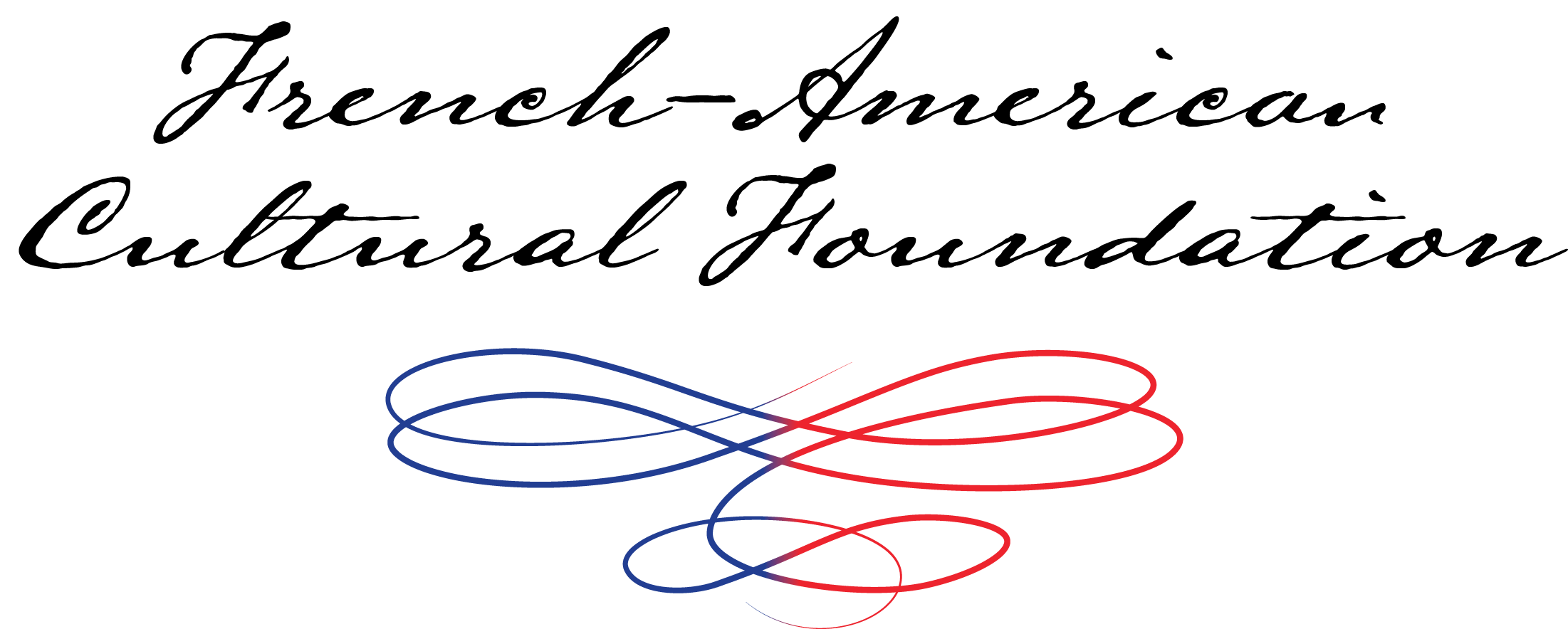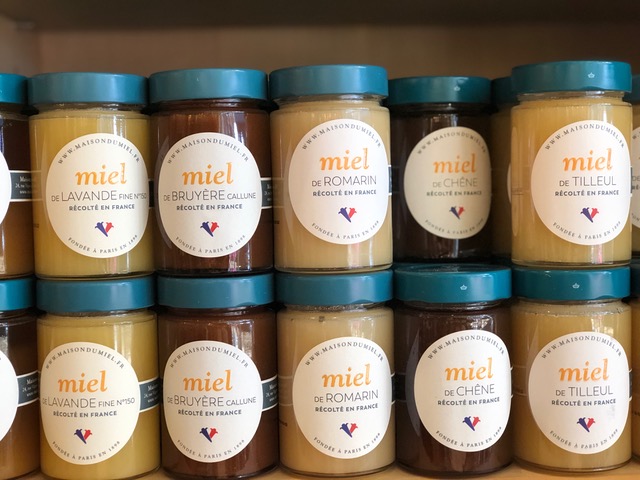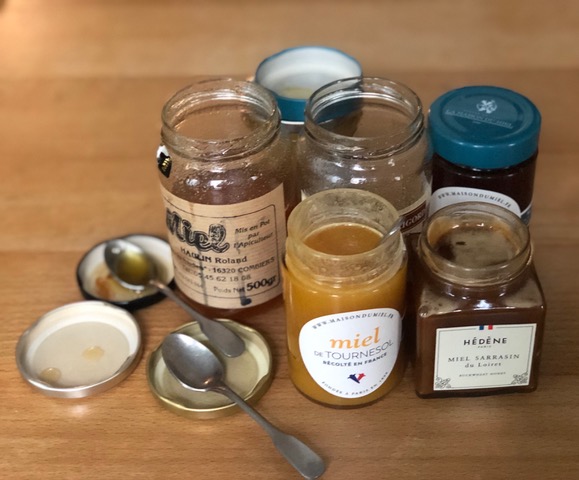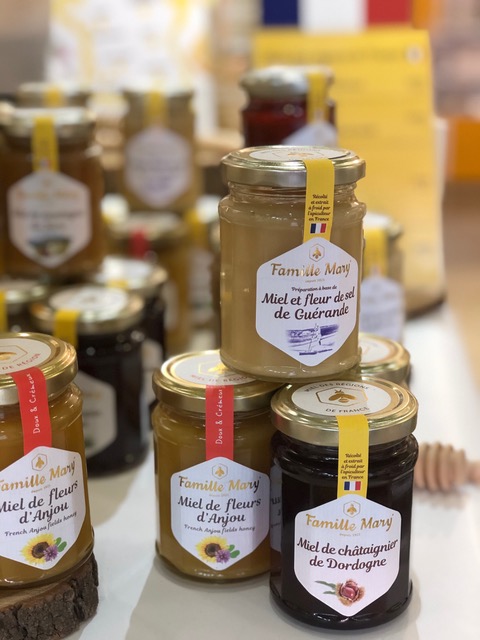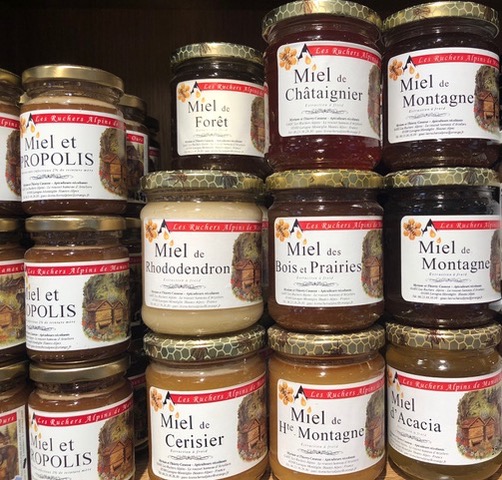France is a magnificent foraging ground for bees, and honey is produced in all 22 regions, from Corsica to Alsace. Honey is a true expression of place. Its flavor, texture, color and quantity depend not only on the flowers foraged by the bee but also the weather and the season. A “bee’s pasture,” as beekeepers call it, rarely goes beyond a mile to a mile and a half from the hives making honey — like wine, directly linked to its “terroir.”
The flavor of the honey is mostly reflected in the plant species from which the nectar is collected, but too much or not enough rain can affect the perfume of the blossom and thus the taste of the honey. The difference in flavor from year to year, and even month to month, can be quite significant.
In temperament climates like that of France, bees make honey in the spring and early summer and sometimes in smaller quantities in the fall. Most small-scale beekeepers blend some or all of their honey together after harvest. In France these will be labeled “Toutes Fleurs” or “Mille Fleurs” (mixed flower honey) or “Miel Printemps” or “Miel Été”(spring or summer honey). But the best, most sought after honey is from a single kind of flower.
Mono floral honeys are more expensive than poly floral honeys or blended honeys because they are scarce and more difficult to harvest. Bees from a colony will stick to one kind of blossom until all the nectar is exhausted before moving on to another plant. It takes an observant and expert beekeeper to introduce a comb into the hives at the beginning of a flow from a particular plant and remove it before the bees start work on the next variety.
When the honey is ready to be harvested, the beekeeper slices off the wax caps from the comb with a hot knife and places the frame in a centrifugal extractor that spins the honey from each cell. The most flavorful honey is going to come from beekeepers who leave it as natural as possible, putting the honey in jars without heating it or straining out any bee residue or wax.
Larger scale honey producers and big brand honey or “supermarket honey” generally mix honeys from various sources, often from different countries, to maintain their volume and to achieve consistent results. These honeys have a uniform color and flavor and are generally pasteurized, that is heated to 70 ° Celsius or more, then quickly cooled. After pasteurization, the honey is microfiltered to make it clear, free-flowing and easier to package. While this type of honey is less expensive than honey made by artisanal beekeepers, the intense production methods of blending, heating and super-filtering results in a much blander product and, it is said, also destroys some of the nutritional value.
By law, for a product to be labeled honey in France, it can only contain nectar transformed by bees – nothing added or removed. But like with any expensive product, there will always be some shady dealers putting fraudulent products on the market. Sometimes cheap multi-floral honey can be packaged and sold as single source honey or honey can be doctored with sugar syrups to increase volume. Or worst of all, honey isn’t honey at all but Glucose aromatisé (flavored glucose). To know you are getting the real deal, look for the source on the packaging or buy honey direct from a producer or at the farmers market.
How to buy honey:
The freshest, tastiest honey generally comes from small-scale beekeepers, whether it’s a blend or dominated by a single flower. Honey can have a liquid or creamy texture. Soft and creamy honey is good to slather on toasts, whereas liquid honey is easier to add to food or for baking.
The French choose their honey by its predominant blossom so the honey section in French food stores can be really crowded. Some honey is delicate in flavor (acacia, tilleul), others are strong (thyme, rosemary), and a few come across as quite bold and aggressive (buckwheat, heather). Below are some of the best.
Miel de Paris
Harvested from rooftop beehives scattered around Paris. Oddly enough, insecticides are forbidden in the city parks and gardens bees do better in Paris than in the countryside. A beehive in Paris produces on average 30 to 60 kgs of honey as opposed to 20 kgs in the countryside.
Miel d’acacia
Found throughout France, it has a pale straw color with flavor notes of vanilla. It is an all-purpose honey and the most popular. This honey is good for cooking and baking.
Miel de thym
The best thyme honey in France is from the Languedoc-Rouissillon region. It has a distinctive reddish-brown color and a strong flavor. It is the honey of choice to stir into a hot lemon tea to fight off a winter cold.
Miel de bourdaine
Harvested in the Landes forest, buckthorn or black alder honey is fragrant with a slight hint of pine. It has a dark brown color and is much sought after by honey connoisseurs.
Miel de tilleul
A light, fragrant honey that tastes similar to the popular tisane made with dried leaves and flowers of the Linden tree.
Miel de sapin
A rare and expensive honey made from honeydew, miellat, a sugary liquid derived from sap. It is generally dark, strongly flavored and less acidic than honey made from nectar. In France, it is produced principally from the Vosges, Jura and Alsace region.
Miel de bruyere blanche
Honey from heather is mostly found in the Provence, Corsica and Languedoc-Roussillon. It is light brown in color and has flavor notes of caramel. A lovely honey to spread on toast. It’s also said to have strong medicinal properties.
Miel de sarrasin
Buckwheat honey, very dark in color with a slight taste of roasted cereals. In France, it’s used to make the famous spiced bread, pains d’épices. It is one of the rare honeys that tastes good stirred into coffee.
Miel de tournesols
A bright yellow, very pleasant honey coming from the sunflowers that decorate the French landscape in the summer. However, the French use a lot of pesticides on sunflowers – it is the second largest oilseed crop after rapeseed – so buy organic.
Honey will keep for years, but it may become darker and lose its aroma and flavor or crystallize. While changes in aroma and color may not be tasty or attractive, it is not a health risk. Crystallization is also quite normal and doesn’t mean your honey has expired. If crystallization happens, simply put your honey in a warm water bath for about an hour to dissipate the crystals.
Charlotte Puckette is a Grand Diplôme graduate of Paris’s Le Cordon Bleu, co-author of The Ethnic Paris Cookbook, as well as a private chef, caterer, cooking instructor, food consultant, and hostess.
